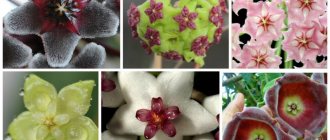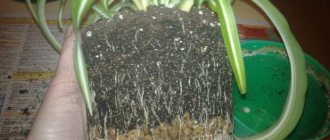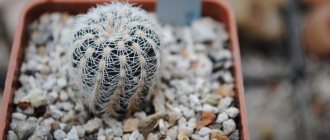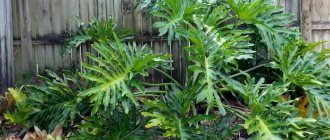Zantedeschia (calla lily) is a herbaceous perennial from the genus Araceae with an elegant flower on a straight peduncle .
It grows in a large bush and is characterized by intensive growth. The basal leaves are large, dark green; in well-developed specimens they grow up to one meter in height and up to 20 cm in width. The spike-shaped inflorescence-cob on a high arrow is wrapped in a tubular leaf-veil. The homeland of Zantedeschia is Africa, its southern regions and the island of Madeira in the Atlantic Ocean, near the northwestern African coast.
| High growth rate. |
| Zantedeschia begins to bloom in the fall and blooms throughout the winter. |
| The plant is easy to grow. |
| Perennial. |
Beneficial properties of zantedeschia
Zantedeschia (calla lily).
Photo Calla is one of the folk remedies for diseases. It has analgesic properties and is used to treat poisonous snake bites.
Without treatment, the plant is poisonous, but when exposed to heat and drying, the toxic substances in it evaporate. A decoction or tincture of crushed rhizomes helps with dropsy. Osteomyelitis is treated with calla lily leaves boiled in milk.
Caring for Zantedeschia at home. Briefly
Zantedeschia is grown in greenhouses with subsequent cut flowers, or as a potted crop at home.
| Temperature | Calla is thermophilic and does not tolerate temperature fluctuations. |
| Air humidity | Loves high air humidity. |
| Lighting | In its homeland, Zantedeschia chooses well-lit places and loves light. |
| Watering | The plant is moisture-loving; in natural conditions it prefers damp, swampy places. |
| Priming | You can buy a ready-made earthen mixture in a specialized store, or you can make it yourself. |
| Feeding and fertilizer | Needs regular feeding. |
| Bloom | The abundant flowering of calla lilies is facilitated by its timely transplantation, with the separation of offspring, and pruning of old flowers. |
| Transfer | Done once every two years. |
| Trimming | Pruning of young shoots is mandatory. |
| Features of cultivation | The main condition is to maintain a rest period of at least two months. |
Caring for Zantedeschia at home. Details
Temperature
In order for Zantedeschia to develop normally, it needs a temperature of 20 - 25 degrees Celsius. It can withstand short-term frosts. It does not tolerate drafts, stops flowering and gets sick in such conditions.
Do not place the plant close to heating devices, where the air is especially dry.
Air humidity
Calla loves moist air and spraying.
Especially in summer, it should be sprayed at least once a day. In conditions of high humidity, especially large, strong flowers bloom on it. Periodically, its leaves should be washed with warm water. Avoid too dry air and a dusty layer on the leaves of the plant.
During the heating season, when the air dryness in the apartment increases, you should place a container of water next to the plant. Or place the pot with the plant on damp expanded clay.
Lighting
Homemade zantedeschia needs good lighting at any time of the year. It tolerates partial shade, develops quite well in such conditions and even blooms. But if there is not enough light for it, it will stop blooming. And this will be one of the signals that it is necessary to increase the illumination of the plant.
But he likes diffused sunlight; constant exposure to direct sunlight reduces the intensity of flowering.
Watering
Since this plant naturally loves damp, swampy areas, zantedeschia at home needs abundant watering, especially in the warm season. In summer, calla lilies need to be watered at least twice a week. Do not let it dry out .
The soil should always be moist, but it should not be over-moistened. That is, it is unacceptable for water to accumulate and constantly remain in the pan. This leads to rotting of the roots.
In mid-summer, watering should be moderated. In winter, rare watering is allowed, but only if the room temperature exceeds 22 degrees. Water for irrigation should be at least room temperature.
Priming
You can grow zantedeschia flower at home using only clean peat. In this case, you need to take care of additional holes in the bottom of the pot and increase the drainage layer. But it is better to make a mixture of several components: clay-turf soil - 2 parts, humus - 1 part, sand - 1 part, peat - 1 part. This mixture will provide the plant with everything it needs for its full development.
Feeding and fertilizers
Homemade zantedeschia looks great with timely fertilizing: it has fresh, bright green foliage and large flowers on strong, long peduncles. It is necessary to feed the plant during its active growth and flowering.
Nitrogen fertilizers are used to improve leaf growth, and potassium and phosphorus fertilizers are used to ensure the timely formation of flower stalks. Feed once every two weeks.
During the flowering period, it is useful to do foliar feeding, for example, spraying the leaves with a solution of potassium humate.
Zantedeschia flowering
The plant blooms at the age of two years .
Flowering begins in autumn and continues throughout the winter.
Older plants bloom in early spring.
In order for calla lilies to bloom profusely, it is necessary to maintain a dormant period, provide it with sufficient lighting, and replant the plant once every two to three years.
Zantedeschia transplant
Due to the fact that calla lilies grow quickly, they require replanting every two years.
The old pot becomes cramped and the roots of the flower appear on the surface of the soil. Calla lilies can be replanted in spring or early November.
Pot for Zantedeschia (calla lilies)
Choose a pot 1.5 cm larger in diameter than the previous one. A drainage layer is placed on the bottom with small holes, and the rest of the space is filled with soil. Then, shake the bush out of the old pot (the plant was watered the day before) and plant it in a new pot with fresh soil. After this, water it with water at room temperature.
How to prune zantedeschia
During the period of active growth, when new shoots appear in the pot, they must be removed so that the main plant receives more nutrients. This will speed up the flowering of the calla lily, making it strong and beautiful.
Features of cultivation
Zantedeschia.
Photo In order for calla lilies to bloom profusely, it is necessary to promptly remove old flower stalks, as well as weak and yellowed leaves. In summer, it is advisable to place the flower in the garden or on the balcony, but not under the scorching sun and away from drafts. It is necessary to maintain a dormant period of 1.5 - 2 months, the plant must rest and gain strength for new flowering. In order to make Zantedeschia sleep, after flowering and the leaves dry out, you must stop watering the plant.
Which bulbs to buy?
It is best to buy bulbs in the spring, then the quality of the material will be the highest. From a botanical point of view, the bulbs of Ethiopian calla lilies are rhizomes. They have a vertical structure - the roots grow from below. The fleshy roots are short in size.
The underground part of colored zantedes is also formed by rhizomes, but they have a disc-shaped rather than vertical shape. Biennial rhizomes have an irregular shape, but are distinguished by the greatest energy. Over the years, the rhizomes begin to grow in a circle. resembling flattened tubers.
Interesting! On the bulbs, some of the eyes remain dormant. You will need to use a gibberellin solution to stimulate their growth.
When purchasing, it is important that the bulbs are healthy. We are often fascinated by suspiciously low prices. And then we observe that the bulbs do not grow or the callas do not bloom. Bulbs that are stored for a very long time simply dry out and become useless. When purchasing, the criterion of elasticity and juiciness of the onion is important. After purchase, another important point is compliance with the storage conditions of the bulbs.
An onion suitable for planting should be large, dense, and resemble a potato tuber. A wrinkled, dented bulb will not grow into a normal flowering bush. Damaged and rotten bulbs are discarded for treatment. The selected rejects are placed in trays and transferred to a cool room with a temperature of 5-7ᵒC, regularly ventilating.
Diseases and pests
- Dark spots on the leaves of Zantedeschia are formed when the plant is infected with various fungi. They, in turn, appear as a result of poor air circulation in the pot with soil, with an insufficient drainage layer.
- Root rot also occurs due to constant excess water in the pot. Leaves and flower stalks begin to rot at the base and then break.
- Withering and drooping of zantedeschia leaves is observed if the zantedeschia is in a draft. It is necessary to change the location of the pot.
- Yellow spot . Ring-shaped yellow spots appear on the leaves, and the leaves themselves become thin and curly, which is not typical for Zantedeschia. Calla lilies are infected with this disease by thrips; the plant must be freed from them.
- Pests . Calla lilies are affected by pests such as spider mites, thrips, scale insects, and aphids. They are controlled with insecticidal drugs.
Possible problems
- Dark spots on foliage . This means that indoor zantedeschia is affected by a fungal disease. The reason for its development is a drainage layer that is too thin or an overly dense substrate that does not allow air to pass through well.
- Root rot . It develops due to stagnation of liquid in the soil mixture. Rot appears at the base of the peduncles and leaf blades, and after some time they break.
- The foliage loses turgor and sags . This indicates that the bush was exposed to a draft. Move it to a more suitable place.
- Yellow spot . Yellow ring-shaped spots form on the surface of the foliage. At the same time, the leaves become thinner and become curly. The carriers of this disease are thrips, which should also be disposed of in a timely manner.
- Pests . Most often, thrips, aphids, spider mites and scale insects settle on the plant. To destroy them, acaricidal and insecticidal agents are used.
It's easy to grow CALLA! Secrets of caring for calla lilies in the garden and at home
Reproduction of Zantedeschia
Reproduction by shoots
After the plant has flowered, you can begin to propagate it.
The shoots (sprouts) that appear around the mother plant are carefully separated and planted in separate spacious pots to a depth of at least 10 cm. Such deepening prevents lodging of the leaves. Offspring appear from children (root collars) formed on the mother's rhizome. Therefore, without waiting for shoots to appear around the bush, you can separate the children from the mother rhizome and plant them in separate wide pots.
Within two to three weeks, stronger young shoots will appear from them than if we separated the already grown shoots from the plant.
Growing zantedeschia from seeds
The plant can be propagated by seeds. They are germinated in a warm place, at a temperature not lower than 25 - 27 degrees.
The seedlings, after they get stronger, need to be pricked: planted in a larger pot with the roots trimmed to allow lateral roots to appear. This improves plant nutrition and promotes the development of a strong root system.
But we must remember that when propagated by seeds, the plant blooms only after five years.
General growing rules
Wherever you plant them: at home in a pot or at the dacha, you need to remember a few points:
- Shallow planting is required, the rhizome is barely covered with soil;
- until the root system is formed, the calla lilies will not sprout, this can last about a month;
- be extremely careful when digging - the tubers can easily be damaged;
- you can predict rain by using a calla lily: droplets of water appear on it if bad weather is about to happen;
- the pot must be porous, it cannot tolerate any other plants in the same pot;
- sometimes the top layer needs to be carefully removed and replaced with fresh substrate.
Types of homemade zantedeschia with photos and names
Zantedeschia aethiopica
This variety is unpretentious and has larger flowers compared to other callas. It is distinguished by its dazzling snow-white cover and bright yellow inflorescence-cob. The height of the plant is up to 100 cm, the size of the bedspread is up to 25.
Zantedeschia odorata
Smelling calla lilies are also called fragrant. Outwardly, it resembles Ethiopian. But unlike it, it has the fragrant aroma of lily of the valley. This is a rare variety of calla lily.
Zantedeschia elliottiana
The flowers of this calla lily reach a height of only 16 cm. But gardeners love it for its beautiful, bright yellow cover. Green leaves are speckled with white. The variety is named after the American botanist Stephen Elliott.
Zantedeschia rehmannii
The height of this hybrid is 40-50 cm. It has elongated, long leaves, unlike other callas. The leaf width is no more than 5 cm. The flower cover is pale pink. The inflorescence is bright yellow.
Zantedeschia hybrids
"Memories"
The color of the bedspread of this calla lily is unusual, black with a burgundy tint, up to 12 cm in size. The inflorescence is the same, black and burgundy, as the bedspread. Plant height is from 45 to 50 cm.
"Nashville" (Nashville)
The shape of the perianth of this calla is elongated and narrowed, the color is two-tone: white and pink. The inflorescence is bright yellow. The size of the bedspread is 12 cm. The plant is compact, up to 45 cm tall.
"Picasso" (Picasso)
The flower is white at the edges, transitioning to a purple throat. The height of the peduncle is up to 15 cm, the spathe is 10 cm. The flowering time of one flower is up to 25 days. The dark green leaves have white spots that take on a metallic tint in the sun.
"Red Alert"
The height of the plant is up to 55 cm. The flower consists of a small bright red blanket and a red inflorescence. The blanket is elastic, shiny, like wax. The leaves are covered with frequent, white specks.
"Pink Mist"
This hybrid produces several flower stalks up to 35 cm long. The pale pink color of the bedspread with a bright orange inflorescence is unusual. The flowers are small, up to 10 cm.
general description
The height of Zantedeschia ranges from one to two and a half meters, depending on the species. The root can be a powerful branched rhizome or a fragile tuber. The leaves of the plant are heart-shaped, with a glossy surface, up to 40 cm long and 20 cm wide, on long fleshy petioles.
The Zantedeschia flower is a yellow spadix-inflorescence on a long arrow. The bract-bract is large, funnel-like, white, yellow or pink in color. After pollination has occurred, the color of the bract changes to green.











